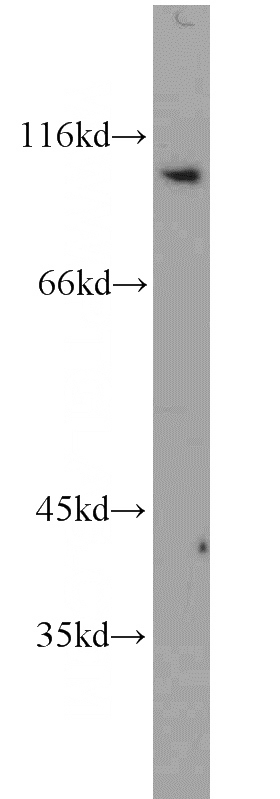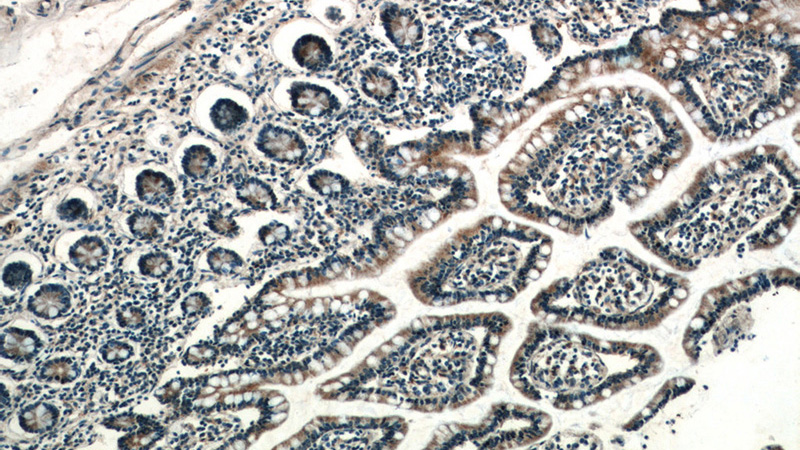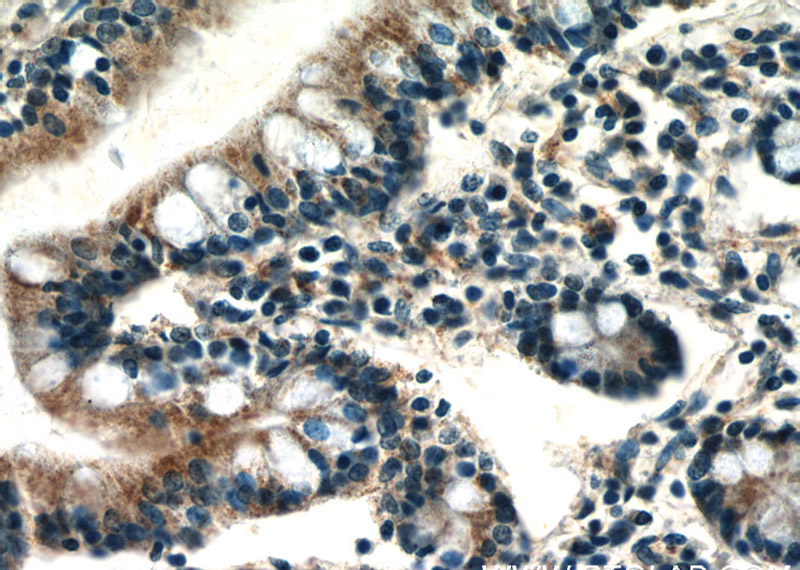-
Product Name
CX3CL1 antibody
- Documents
-
Description
CX3CL1 Rabbit Polyclonal antibody. Positive WB detected in PC-3 cells, human brain tissue. Positive IHC detected in human small intestine tissue. Observed molecular weight by Western-blot: 90-100 kDa
-
Tested applications
ELISA, WB, IHC
-
Species reactivity
Human; other species not tested.
-
Alternative names
ABCD 3 antibody; C X3 C motif chemokine 1 antibody; C3Xkine antibody; CX3CL1 antibody; CXC3 antibody; CXC3C antibody; FKN antibody; fractalkine antibody; neurotactin antibody; NTN antibody; NTT antibody; SCYD1 antibody; Small inducible cytokine D1 antibody
-
Isotype
Rabbit IgG
-
Preparation
This antibody was obtained by immunization of CX3CL1 recombinant protein (Accession Number: NM_002996). Purification method: Antigen affinity purified.
-
Clonality
Polyclonal
-
Formulation
PBS with 0.1% sodium azide and 50% glycerol pH 7.3.
-
Storage instructions
Store at -20℃. DO NOT ALIQUOT
-
Applications
Recommended Dilution:
WB: 1:500-1:5000
IHC: 1:20-1:200
-
Validations

PC-3 cells were subjected to SDS PAGE followed by western blot with Catalog No:109633(CX3CL1 antibody) at dilution of 1:1000

Immunohistochemistry of paraffin-embedded human small intestine slide using Catalog No:109633(CX3CL1 Antibody) at dilution of 1:50 (under 10x lens)

Immunohistochemistry of paraffin-embedded human small intestine slide using Catalog No:109633(CX3CL1 Antibody) at dilution of 1:50 (under 40x lens)
-
Background
Chemokines direct the trafficking of white blood cells in immune surveillance, playing a key role in inflammatory and infectious diseases such as AIDS. The human CX3C chemokine carries the chemokine domain on top of an extended mucin-like stalk. CX3CL1 is synthesized as a 50-75kDa precursor and undergoes glycosylation to yield two mature forms: a 100kDa cell membrane bound form and an 85kDa soluble form which is released from the cell surface.The soluble CX3C chemokine has potent chemoattractant activity for T cells and monocytes, and the cell-surface-bound protein, which is induced by primary proinflammatory signals in activated primary endothelial cells, promotes strong adhesion of those leukocytes.
-
References
- Ma Y, Visser L, Roelofsen H. Proteomics analysis of Hodgkin lymphoma: identification of new players involved in the cross-talk between HRS cells and infiltrating lymphocytes. Blood. 111(4):2339-46. 2008.
- Boelens MC, van den Berg A, Fehrmann RS. Current smoking-specific gene expression signature in normal bronchial epithelium is enhanced in squamous cell lung cancer. The Journal of pathology. 218(2):182-91. 2009.
Related Products / Services
Please note: All products are "FOR RESEARCH USE ONLY AND ARE NOT INTENDED FOR DIAGNOSTIC OR THERAPEUTIC USE"
